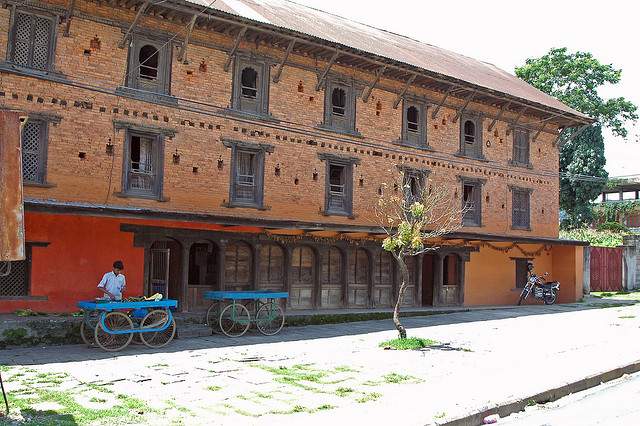Tourism in Nepal is mainly fueled by trekkers who flock to the Himalayas with sights set on climbing the most famous peaks in the world, namely Mt Everest. A traditional route to Everest leads you through Kathmandu and on to Lukla and Sagarmatha National Park on the eastern side of the country. The Annapurna Mountains sit off to the west of Kathmandu, with their base for trekking being the city of Pokhara. Though most travelers use Pokhara only as a jumping off point for their treks, Pokhara is a destination in and of itself.
Either a short flight or a six-hour bus ride from the capital, Pokhara is the polar opposite of Kathmandu. Here, there is little traffic congestion. The air is clear and the mountains are green. And though there may not be an abundance of important religious sites, Pokhara is a must have experience for all those searching for calm in Nepal.
In order to get a full dose of calmness, here are a few ideas to get the most out of your time in this lakeside city.
1. Take a yoga course at one of the many yoga centers in the Pokhara area
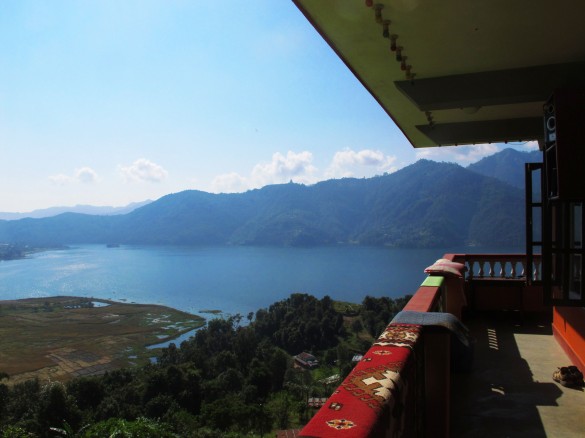
Yoga and the art of meditation are extremely important practices in Nepal, and thus are important pieces in understanding the culture. Meditation is key to both Buddhism and Hinduism whereas yoga, which has become a popular worldwide phenomenon, stems from Hinduism, Nepal’s most popular religion. There are many yoga retreats in and around Pokhara that offer multi-day courses to travelers wanting a casual but authentic yoga experience. Such a course will explore spirituality and meditation, as well as offer yoga classes led by serious yogis. The experience can also include relaxation treatments, overnight lodging, and organic vegetarian meals, all in a relaxing environment.
Sadhana Yoga Retreat is perched on a hill overlooking the lake and offers both three and six day sessions, as well cleanse programs and cooking classes. Visit their website for more information on courses and prices. Students of all skill levels are welcome.
2. Visit Old Pokhara for a glimpse into Nepali life off the tourist trail
Most visitors spend all their time in lakeside Pokhara, an area full of tourist-friendly restaurants, shops, and guesthouses. However, the city is quite large, made up of many districts and neighborhoods. A visit to the other parts of the city will help give you a better feel for its culture and its people.
The public bus makes frequent stops between Lakeside and Old Pokhara, the most historic area of the city. Walking around the streets feels like walking through a time warp, as the some of the antique wooden Newari buildings have not been altered in decades. Colorful banners line the streets, and shop owners sit patiently waiting for business. There no traffic jams here. As there are few cars and even fewer tourists, a walk around Old Pokhara makes for a wonderful way to see the Newari lifestyle away from western tourism.
3. Take a solo hike up to the World Peace Pagoda
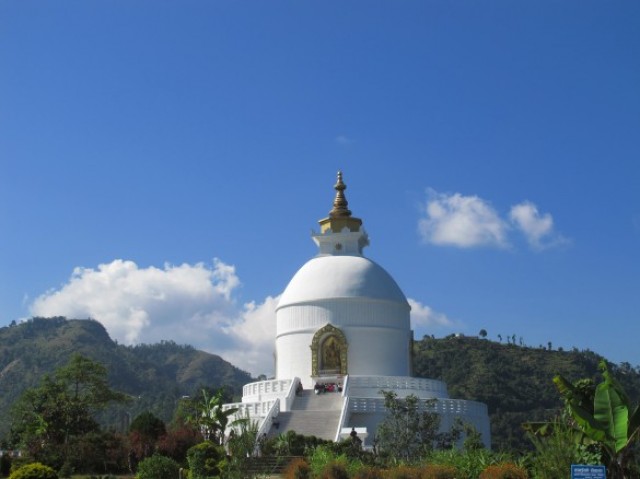
Only a short five kilometer walk uphill from lakeside sits the World Peace Pagoda. This stupa, built by a Japanese Buddhist monk, is meant to serve as a symbol of unity amongst all people striving for world peace. Though it is barely visible from town, the Pagoda’s location offers a panoramic view of Pokhara below, as well as a glimpse of the Annapurna range peeking out from behind the foothills. There are a few different trails to choose from that lead up the hill, all which take you through the forest along the lake.
This hike is not to be missed as the view on a clear day is almost as spiritual as the pagoda itself. The walk is generally mild, but does get you far enough away from the city to enjoy the outdoors.
4. Become a regular at one of the lakeside Tibetan restaurants

There are countless restaurants to choose from in Pokhara – some Nepali, some international, offering a selection of local food. Mixed in with Indian, the ubiquitous Nepali pizza, Mexican, and European eateries, there are a handful of small Tibetan restaurants. You can find these scattered along the lakeside road, usually decorated minimally with only several tables. Each are run by Tibetan refugee families, who are proud of their heritage and their cuisine after escaping from Chinese tyranny in Tibet. On the menus, you’ll find the Nepali staples such as dal bhat, momos, and Nepali set meals, but you can also indulge in a steaming bowl of Tibetan Thugpa noodle soup or Tibetan bread, a traditional crispy flat donut.
Not only is the food delicious and well-priced for a traveler, but the families that run these tiny haunts are welcoming and warm. The Potala Restaurant, my favorite Tibetan choice, welcomed us every morning during our stay in Pokhara with smiles. After ordering our food, we would play games with the owner’s son while we waited. Though few words were exchanged between us due to the language barrier, I found comfort in the unspoken knowing nods exchanged between the owner and I each morning we returned to support their family.
5. Take a public boat trip out Barahi Temple, which floats in the middle of Phewa Lake
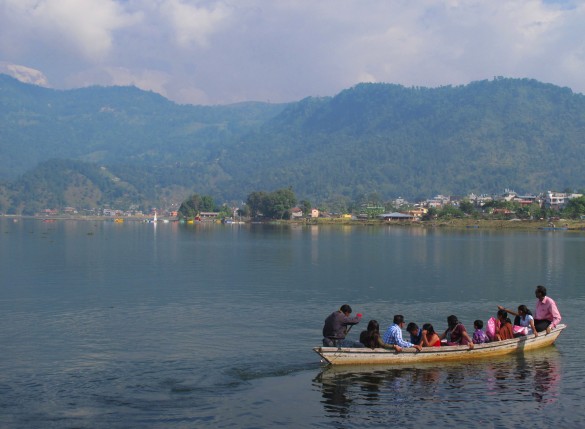
A canoe trip on Phewa Lake is a must for a visit to Pokhara, including a stop at Barahi Temple. The temple sits on a small island only a few minutes’ boat ride from the shore, making it a top destination for both locals and curious tourists. You can either hire your own canoe at the dock or pile onto a public one for only a nominal fee. In addition to visiting the 2-story pagoda, the stunning views of the mountains and the expansive lake from the island are stunning.
6. Still looking for a little adventure? Pokhara does that too.
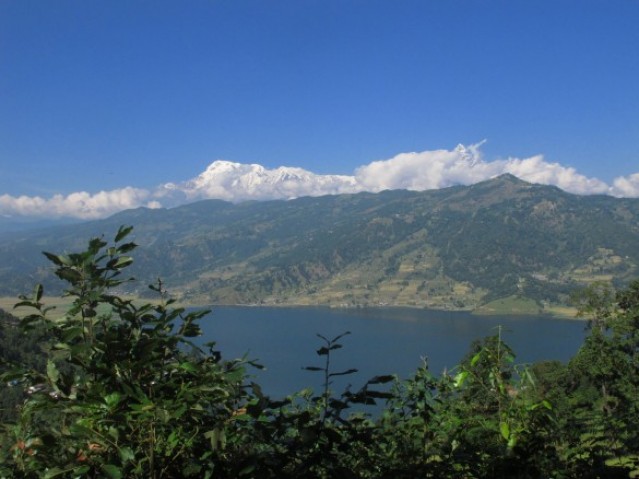
From the top of nearby Sarangkot mountain, you can see into the Annapurnas, across Phewa Lake to the Peace Pagoda, and down through the valley to Pokhara. With views this nice, there will invariably be someone ready to paraglide right off the side of the mountain – and many have. It has become such a popular activity that now there are a plethora of tour companies willing to lead you on a paragliding or hang-gliding flight off the mountain. Make sure to book your trip for early morning as the mountains tend to mist-up by mid-day.
Jumping off a mountain isn’t your thing either? You can also head out into the forest to visit one of four popular limestone caves. Some of them are quiet and dark; others are home to hundreds of fruit bats. They are easily visited by taking a short taxi ride or rented bicycle from town.
Photo credits: Richard Weil, all others courtesy of the author and may not be used without permission.
